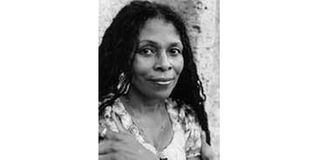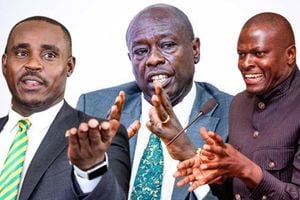Assata Shakur: Unsung heroine of black liberation

Assata Shakur, a dauntless women's rights and black liberation activist.
What you need to know:
- The memoir is a passionately authored, uniquely captivating and powerfully enthralling read.
- It's hard-hitting, explicitly depicted, thought-provoking and eminently educational.
On May 3, 1973, at a turnpike in Newark, New Jersey in the US, Assata Shakur, a dauntless women's rights and black liberation activist, was stopped by policemen. She was forced out of the car at gunpoint and shot. She was then unjustifiably arrested, framed and defamed for killing a police officer.
"The police in the black communities were nothing but a foreign, occupying army," Assata writes in Assata: An Autobiography. "Beating, torturing, and murdering people at whim and without restraint."
The memoir is a passionately authored, uniquely captivating and powerfully enthralling read. It's hard-hitting, explicitly depicted, thought-provoking and eminently educational. It denotes the detrimental throbbing decay of systemic misogyny and bigotry, their spellbinding origins and vastly reprehensible and corrosive ramifications.
To suppress black progression, the insidious American administrations had for decades, developed a repertoire of racist policies, leading to the construction of numerous state correctional facilities and federal prisons, primarily in very remote, white-dominated, rural American communities.
The prejudiced system ensured astronomical federal and state funding was dispatched to the exorbitant management of these maximum security penitentiaries, creating many jobs for the rural white population.
To keep these prisons operating through government benefaction, they were deliberately crammed beyond capacity with black people. Black neighbourhoods were purposefully flooded with narcotics, illegal firearms, gun shops, degenerate policemen and improvident schools. To increase the percentage of arrests, the three-strikes law was introduced in US states. This meant innocuous offenders arrested for the third time for petty crimes were sentenced to life in prison.
The majority of white supremacists viewed the police force as the most suitable occupation, with the sole intention of proliferating law enforcement, brutally apprehending black people and contaminating court cases to stack American prisons.
It resulted in blacks, who constituted 15 per cent of the American population, constituting 60 per cent of murder victims and 75 per cent of the prison population. "For every police officer who is murdered," Assata states, "there are at least 50 black people killed by the police."
Most US states had a ratified charter that placed a shield of civil service law around law enforcers. This ensured a lifetime of security of tenure for police officers, allowing them to operate as a quasi-military organisation with ferocious impunity.
Assata majored in history, psychology and sociology at the Manhattan Community College and City College of New York-CCNY. She moved to Berkeley California and joined The Black Panther Party in an effort to enforce a revolution on state oppression.
The Black Panther Party was a civil rights organisation, originally formed by black college students in Oakland, California. Their inception objective was to patrol the streets, monitor the aggression of the police and counter their brutality, with a long-term objective of seeking reparations for historical injustices against blacks.
Assata also worked with Black Panther medical students and doctors to set up free clinics in Harlem, New York, helping in the provision of health services. She fashioned the Saturday Liberation School for Children that implemented the distribution of impactful books to decolonise young minds from self-hatred and help in their prideful restoration. Blacks had subconsciously been fractured by mental effects of slavery, segregation and widespread systemic prejudice.
The imperious Federal Bureau of Investigation (FBI) was led by a racist insidious and sadistic director called J. Edgar Hoover from 1924 to 1977. His primary objective was to destroy the credibility, validity and reputation of any black-affiliated organisation and successful black individuals. He set up a counter-intelligence wing, Cointelpro, which he used to create prevarication and conflict within the Black Panther Party.
Inexplicable circumstances began occurring in Assata's life. Occasionally, she'd turn around and sight strange men trailing her. Although she stopped paying her telephone bill, the tapped phone kept working. After a while, she stopped receiving any bills.
The Black Panther Party was disrupted and vanquished by the nefarious FBI counter-intelligence service through unpardonable arrests, hyperbolic accusations and belligerent assassinations.
On May 2, 1973, wanted posters of the irrepressible Assata were maliciously plastered in print and electronic media in New York City. She became FBI's most wanted woman. This was for an FBI-staged bank robbery in Queens, which she never committed and multiple false accusations and fragmented cases.
After recovering from the gunshot wounds, on May 3, 1973, Assata orchestrated the most sublime, daring and successful superheroine prison break. She escaped, with finesse, from Clinton Correctional Facility. She fled to Havana, Cuba, which had no extradition rights with the US, inspiringly displaying the miraculous power of oppressed women and becoming an improbable martyr.
Jeff Anthony is a novelist, a Big Brother Africa 2 Kenyan representative and founder of Jeff's Fitness Centre @jeffbigbrother





